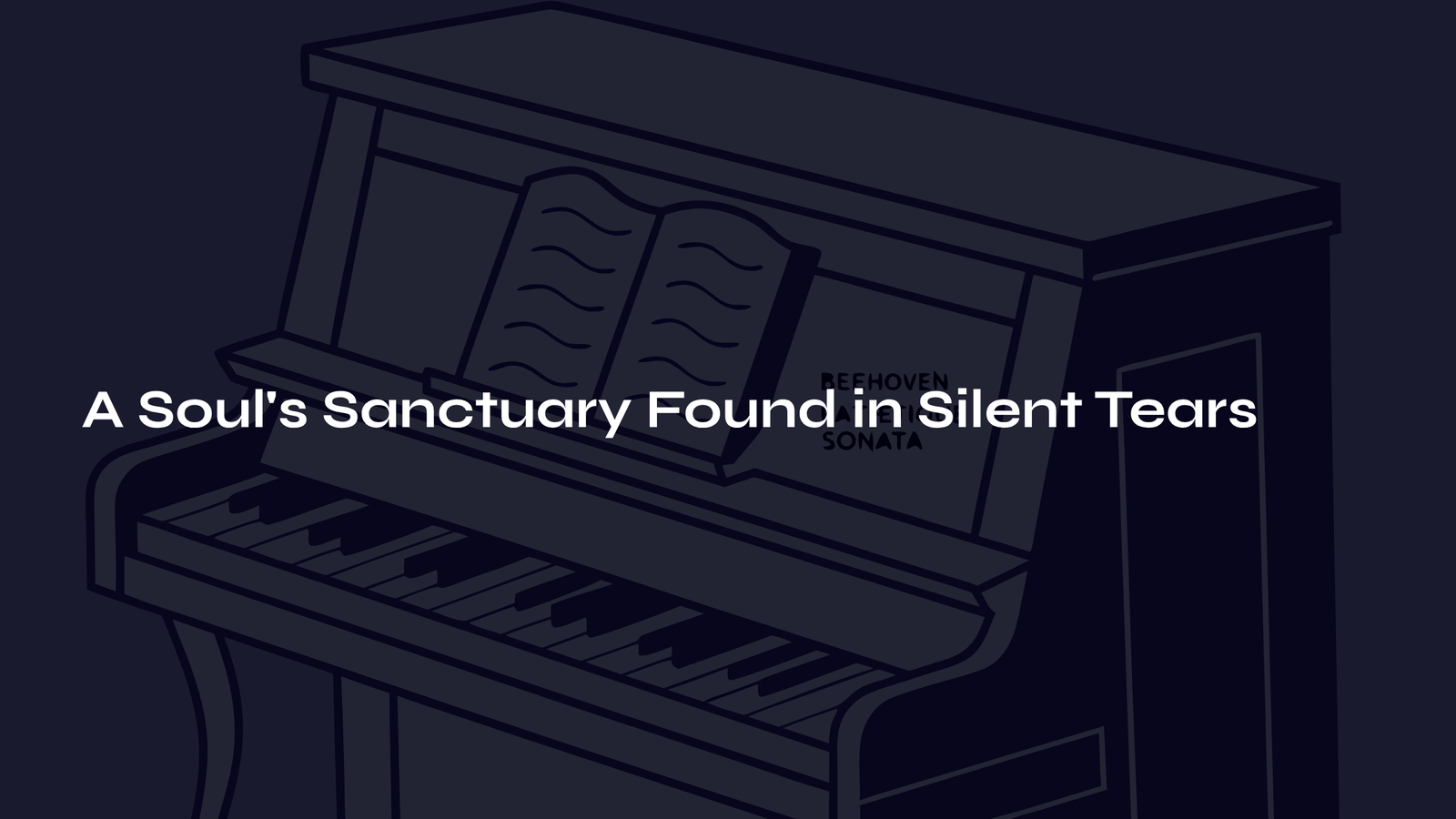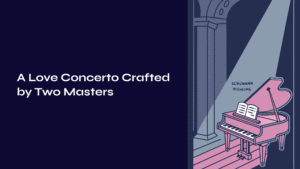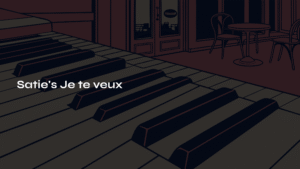Table of Contents
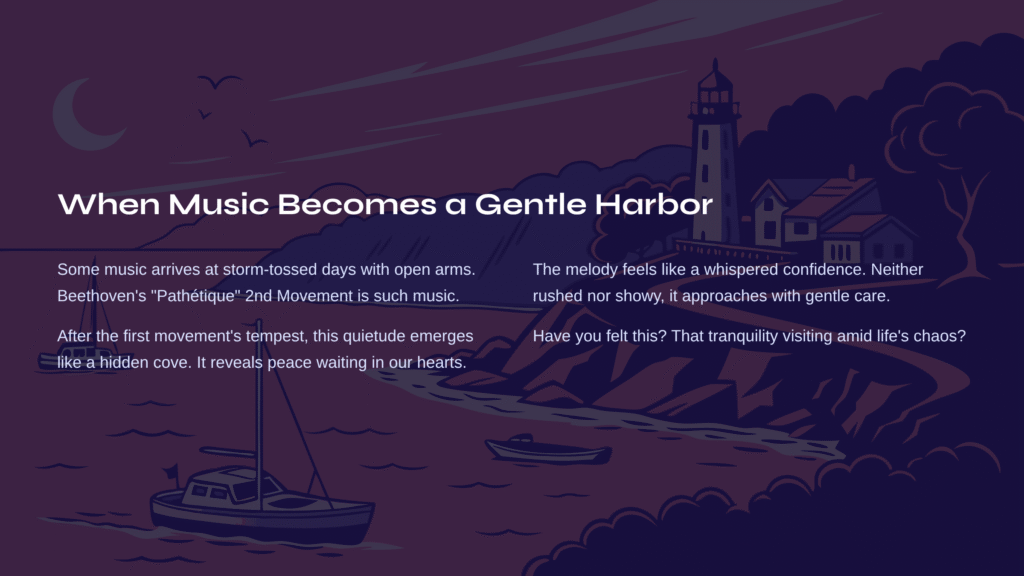
When Music Becomes a Gentle Harbor
Some music arrives at the end of storm-tossed days to greet us with open arms. Beethoven’s Piano Sonata No. 8 “Pathétique” 2nd Movement is such music. After the first movement’s tempestuous declaration, this sudden quietude emerges like a hidden cove discovered between crashing waves, revealing the peace that has been quietly waiting in the depths of our hearts.
The melody flowing across the piano keys feels like someone’s whispered confidence. Neither rushed nor ostentatious, it approaches us with the gentle care of an old friend offering comfort through a reassuring touch on the shoulder. Have you ever experienced such a moment? That inexplicable tranquility that suddenly visits amid the chaos of daily life?
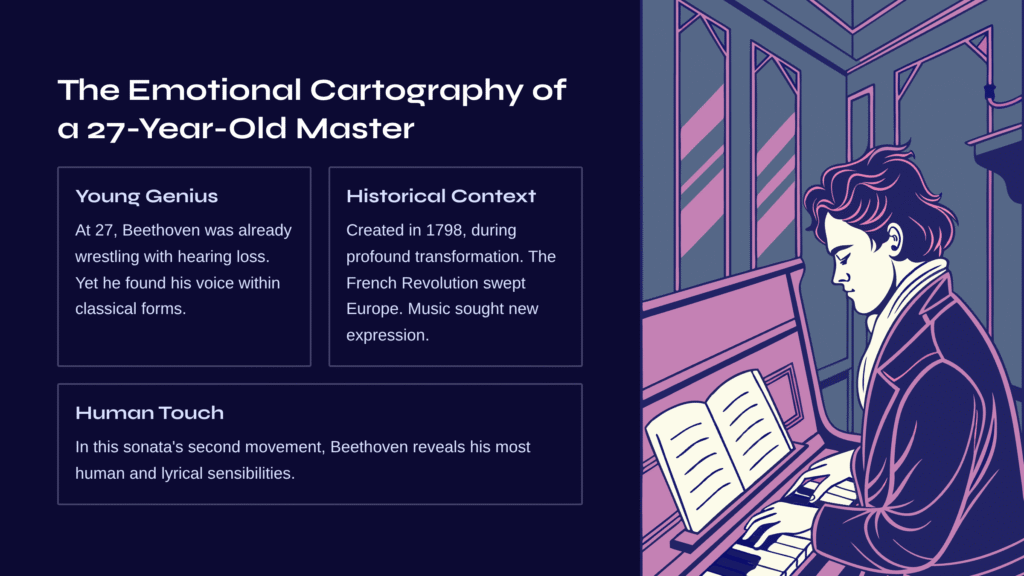
The Emotional Cartography of a 27-Year-Old Master
When the 27-year-old Beethoven presented this work to the world in 1798, he was already wrestling with the shadows of hearing loss. Yet during this period, Beethoven was still finding his unique voice within the classical forms he had inherited. This sonata, better known by its “Pathétique” nickname, achieved immediate success in Vienna.
The late 18th century, when this sonata was born, was an era of profound transformation. The reverberations of the French Revolution swept across Europe, and the musical world was likewise searching for new modes of expression, navigating between Baroque traditions and Classical innovations. Against this historical backdrop, Beethoven demonstrated his extraordinary ability to translate personal emotions into musical language. Particularly in this sonata’s second movement, he reveals his most human and lyrical sensibilities.
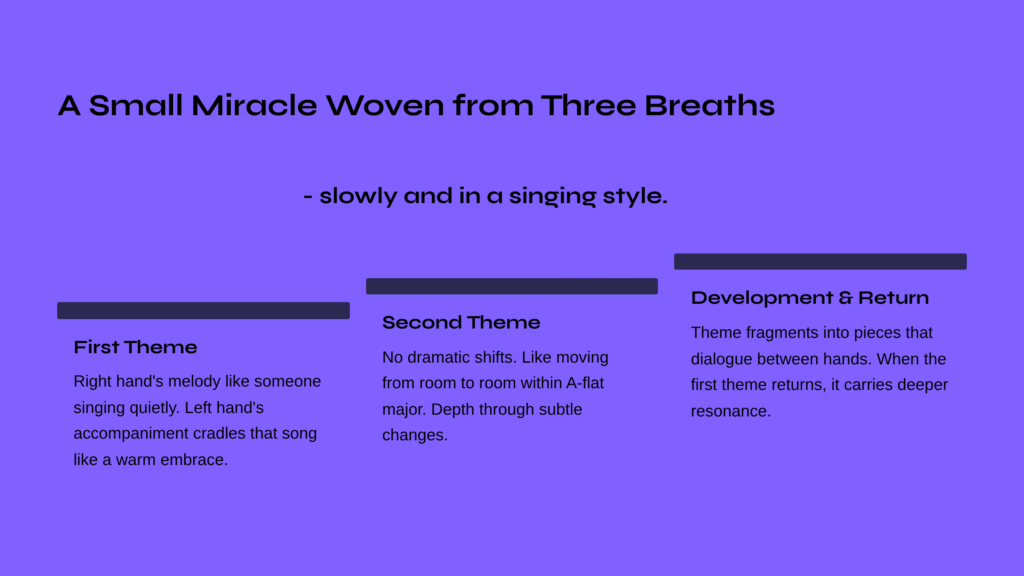
A Small Miracle Woven from Three Breaths
Adagio cantabile – slowly and in a singing style. Within this brief directive lies all the secrets of the second movement. Beginning in A-flat major in 3/8 time, this movement may be a compressed sonata form, but the emotional density contained within surpasses that of any grand work.
When the first theme appears, the right hand’s melody seems like someone singing quietly to themselves. The left hand’s simple accompaniment cradles that song like a warm embrace. Here, Beethoven doesn’t seek to display technical prowess. Instead, he conveys the most sincere emotions in their most elemental form.
As we transition to the second theme, there are no dramatic tonal shifts. It feels like quietly moving from room to room within the warm confines of A-flat major. This choice exemplifies Beethoven’s mastery – rather than flashy modulations or theatrical contrasts, he creates depth through subtle harmonic changes and melodic variations.
In the development section, the theme fragments into small pieces that dialogue between the hands. This conversation isn’t fierce – it’s intimate and secretive, like longtime lovers who understand each other without words. When the first theme returns in the recapitulation, it carries deeper resonance than before. Though the same melody, it now bears the weight of its journey.
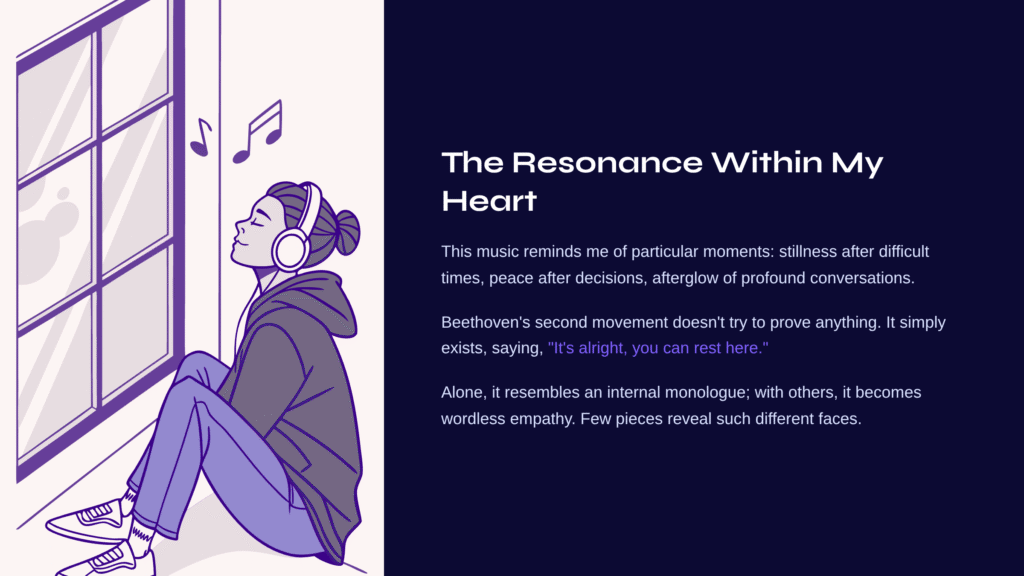
The Resonance Within My Heart
Every time I listen to this music, I’m reminded of particular moments: the stillness that follows after enduring difficult times, the peace of the morning after making a major decision, the lingering afterglow of a profound conversation. These moments share common qualities – they are not noisy, and they are deep.
This is precisely where Beethoven’s second movement finds its power. The music doesn’t try to prove anything to us. Instead, it simply exists, as if saying, “It’s alright, you can rest here for a while.” That’s why this movement brings such calm to the heart. The pressure to hurry somewhere or achieve something dissolves.
What strikes me particularly is how this music feels different when heard alone versus in company. Alone, it resembles an internal monologue; with others, it becomes wordless empathy. It’s rare for music to reveal such different faces depending on the circumstances.
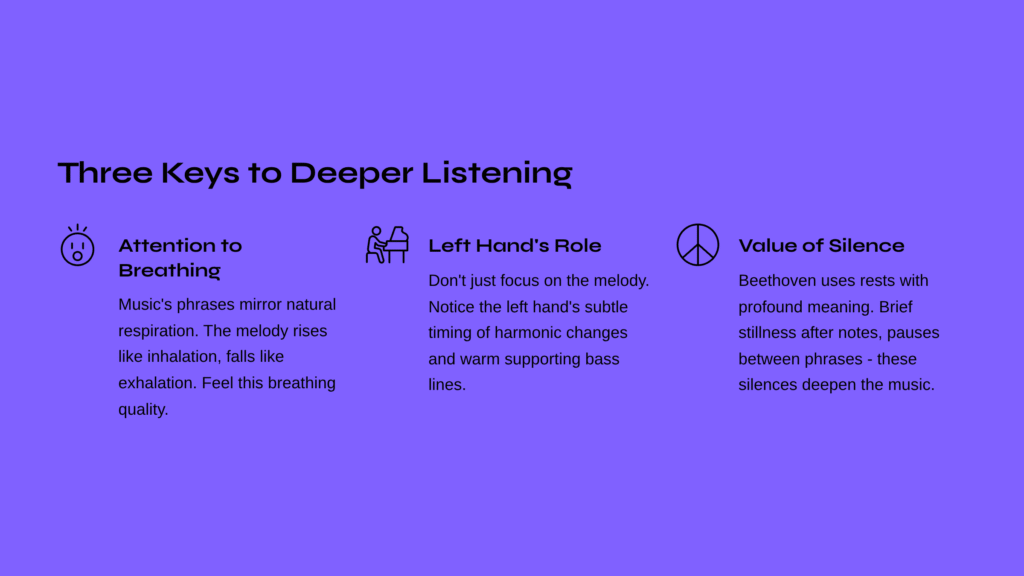
Three Keys to Deeper Listening
The first is attention to breathing. This music’s phrases mirror natural human respiration – the melody rises like an inhalation, falls like an exhalation. Conscious awareness of this breathing quality makes the music feel more alive.
The second is recognizing the left hand’s role. While it’s easy to focus solely on the right hand’s gorgeous melody, the left hand’s accompaniment forms this music’s foundation. Notice the subtle timing of harmonic changes and the warmth of the supporting bass lines.
The third is appreciating the value of silence. Beethoven uses rests and spaces with profound meaning in this movement. The brief stillness after notes end, the small pauses between phrases – these silences actually deepen the music. Don’t miss these moments of quiet; breathe along with them.
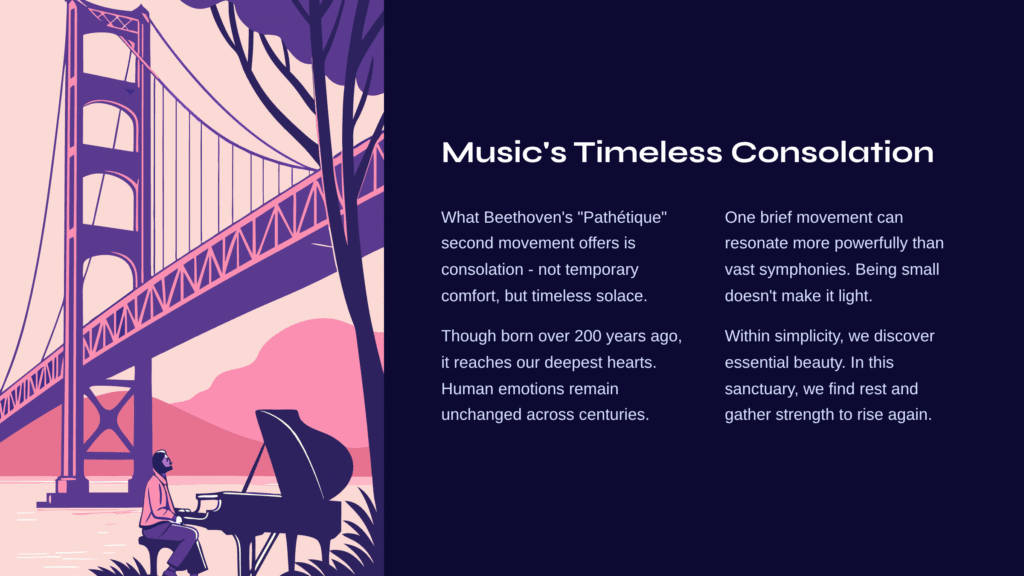
Music’s Timeless Consolation
Ultimately, what Beethoven’s “Pathétique” Sonata second movement offers us is consolation – not temporary comfort, but timeless solace. Though this music was born over 200 years ago, it still reaches into the deepest parts of our hearts, and herein lies the reason.
This music demonstrates that human emotions, in their essence, remain largely unchanged across centuries. The yearning for quietude and peace that Beethoven felt in 1798 can still be understood and shared by us in 2024. It’s a moment when music extends its hand across the river of time.
This is why one brief movement can sometimes resonate more powerfully than vast symphonies. Being small doesn’t make it light; being quiet doesn’t make it meaningless. Rather, within that simplicity, we discover the most essential beauty. In this small sanctuary that Beethoven left for us, we find rest and gather strength to rise again.
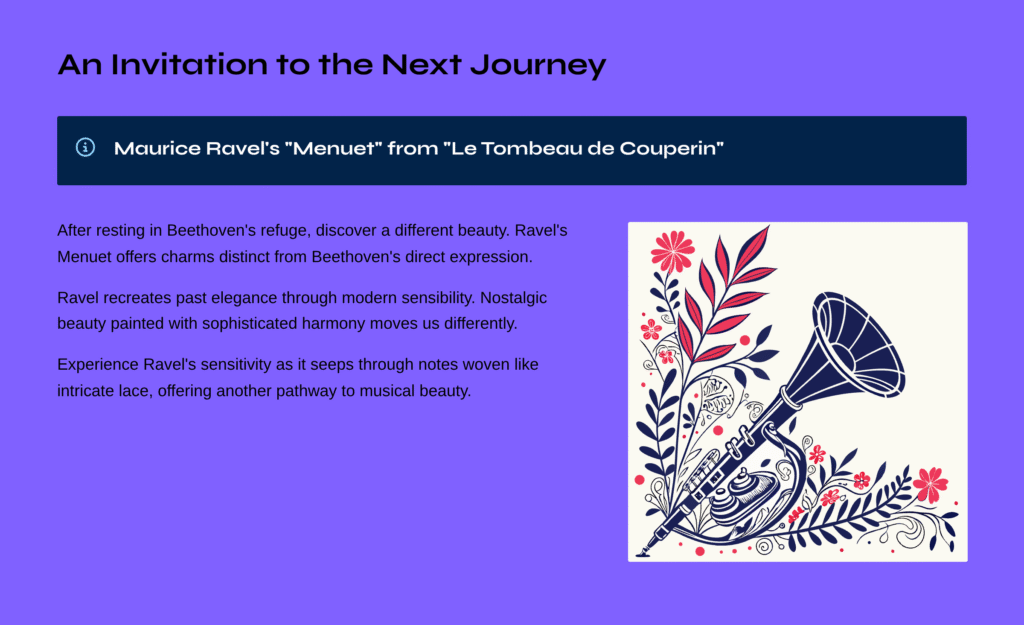
An Invitation to the Next Journey: Ravel’s Exquisite Remembrance
After finding sufficient rest in Beethoven’s lyrical refuge, perhaps it’s time to encounter a different kind of beauty. Maurice Ravel’s “Menuet” from “Le Tombeau de Couperin” offers a work with charms distinct from Beethoven’s direct emotional expression.
Ravel’s Menuet represents a 20th-century reinterpretation of 18th-century French court music. While Beethoven draws genuine emotion from the depths of his heart, Ravel recreates past elegance through modern sensibility. The nostalgic beauty painted with sophisticated harmony and delicate tonal changes moves our hearts in ways entirely different from Beethoven’s approach.
Particularly, the melodic dialogue and transparent textures that emerge in this Menuet’s middle section create fascinating contrasts with Beethoven’s direct lyricism. Instead of pouring out emotions directly, you’ll experience Ravel’s unique sensitivity as it seeps secretly through notes woven like intricate lace, offering a different pathway to musical beauty.
